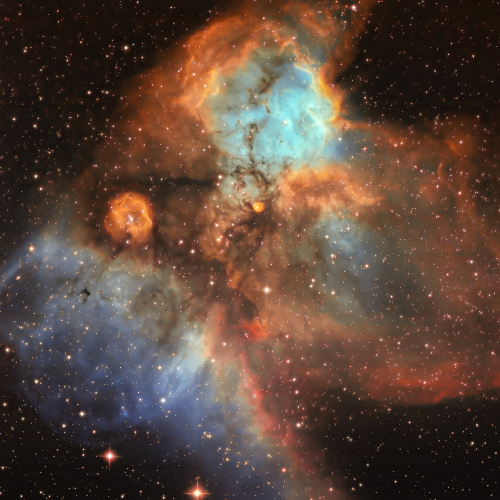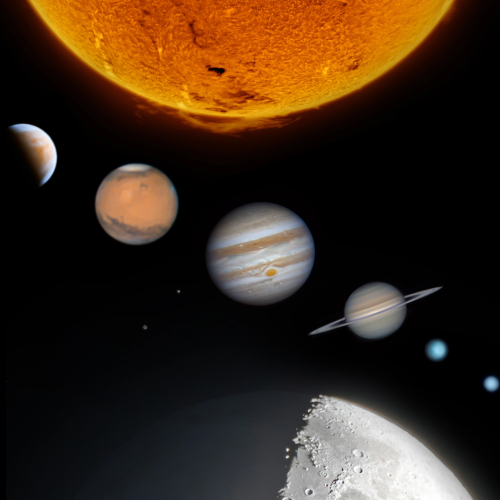 图像处理小技巧
图像处理小技巧PC Spec For Post Processing using Pixinsight and or Seti AS
Hi folks. I am just about to start doing some Post Processing of my captured Seestar images. My question is around what spec PC should I use for post processing. I am thinking about using either Pixinsight or Seti AS as my main software to accomplish this task. When I see YouTube videos of pist Processing, there seems little time spent Stacking, layering etc in these videos. So I ask myself what spec are these PC's that chew through Huge numbers of images seemingly very rapidly So my question is what spec machine will be able to handle/process these intensive tasks. Currently I have a Dell Optiplex i7 Intel, 16GB Mem, 500GB SSD and integrated graphics. The monitor is a 43in high spec IPS panel. Any thoughts would be welcome Oh and not a large budget to work with Cheers Steve I
 图像处理小技巧
图像处理小技巧hubble-like astro-image
How can I make hubble-like astro-images with seestar S50? From S50 we get only the image filtered by UV/IR-cut. It doesn't have the OIII and SII filters. Therefore it is not possible to make the hubble color from the point view of hardware. But maybe image processing can provide the possibility. I think we can have a good discussion here. Thanks in advance.
 图像处理小技巧
图像处理小技巧Dark Library = Free Noise Reduction
Matched darks reduce fixed-pattern and thermal noise before you even touch denoise. How to build:• Capture 20–30 darks per exposure/temperature combo you use (e.g., 10 s @ warm nights, 12 s @ cool nights).• Same exposure/gain as lights; cover/cap the optics to block light.• Refresh seasonally; retire old masters if your ambient temps change a lot. Benefit: cleaner stacks → lighter denoise → better star color and faint dust retention. #Calibration #Darks #Noise #Astroimg
 图像处理小技巧
图像处理小技巧Any advice for First PC Build for processing
Hi all after some advice for my first PC build- Looking at using pixinsight and siril for processing- what sort of build should I be looking at and what could you recommend parts wise- this build will just be used for stacking processing - so no gaming and also looking at future proofing it thank you
 图像处理小技巧
图像处理小技巧Managing Field Rotation Like a Pro
Alt-Az mounts rotate the field fastest near zenith/meridian. Rotation softens stars at the edges and costs you crop. Keep it tight:• Favor targets at 40–60° altitude when possible.• Near meridian: keep subs ≤12–15 s.• Leave 5–8% framing headroom for later crop.• Re-center/plate-solve every 20–30 min to keep the subject in the sweet spot. Pro tip: if edges look smeared but the center is sharp, you’re seeing rotation—not just tracking. Shorten subs, increase stacks.#SeestarS50 #FieldRotation #Framing #AltAz
NEW
 探索星球
探索星球 创建星球
创建星球我的星球
问题榜单
1望远镜的目镜选择?
2如何在城市里(六级区)出摊打野拍深空?而且新购入的设备总价不超过一万?
3Pixinsight - is it worth it ? How is the learning curve ?
4Sun Guardian Badge - best tips?
5Help with the Moon Phase Tracker?
6What are y’all’s favorite deep sky objects?
7Sirius Warrior - new badge / new questions !?
8Who’s going to AstroCon2025 at Bryce Canyon?
想法榜单
1Lego made solar finder
2关于超级蓝月亮,全面的问题解答(Super Blue Moons: Your Questions Answered)
3Sirius Warrior Acquisition Group (SWAG)
4关于月食的一切,类型、图像以及发生的频率。
5Comparison of S30 v S50 Rosette Nebula
6Nice garbage container always polar aligned containers on wheels Pull and close up.
7What is your motivation to do astrophotography?






